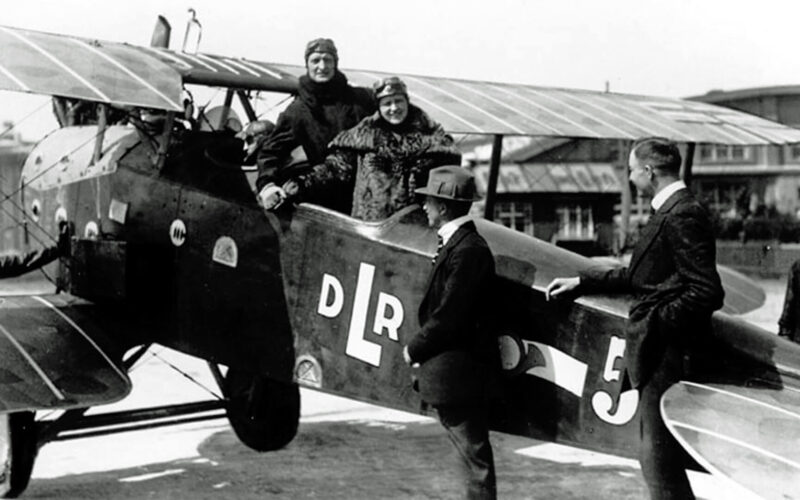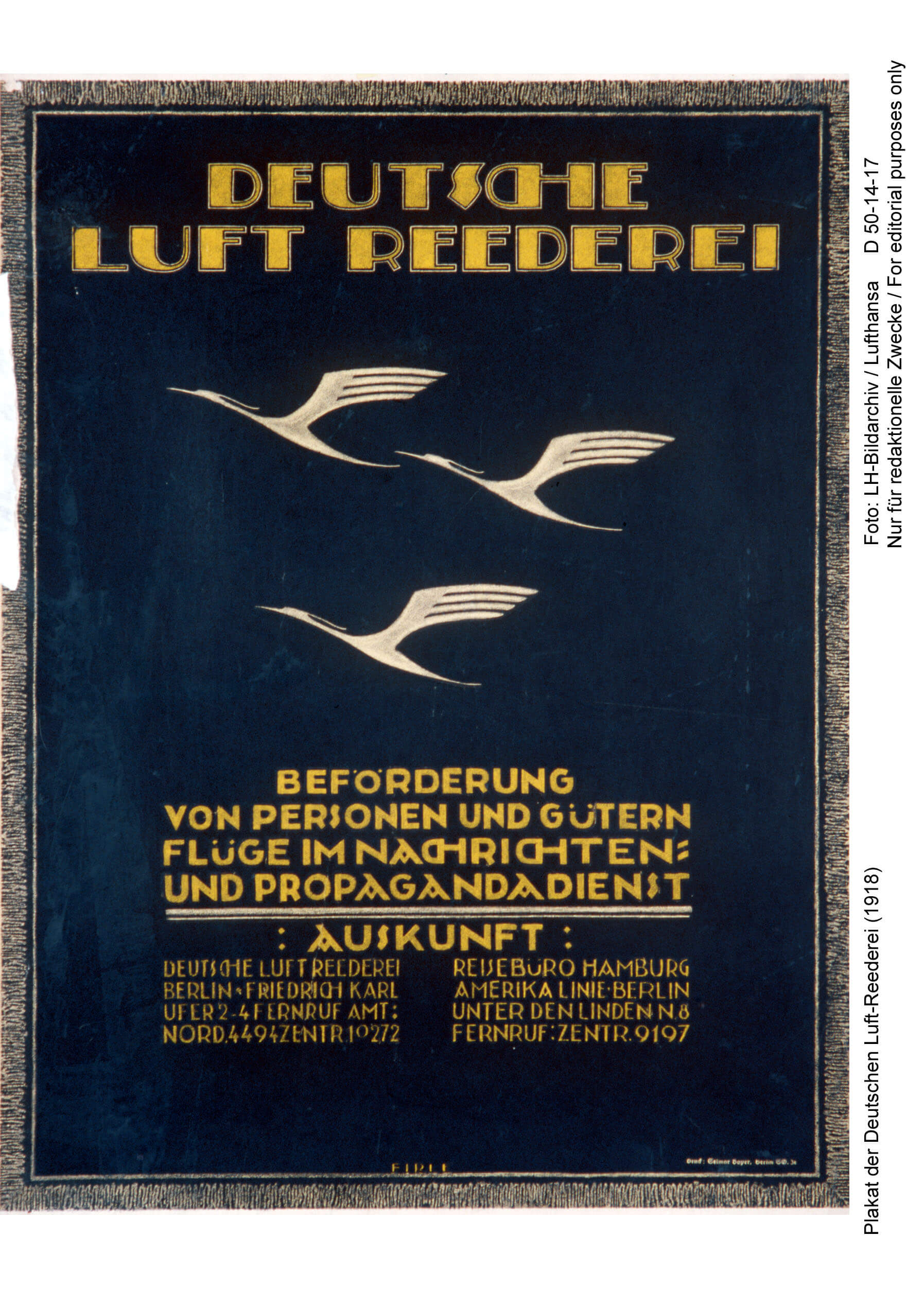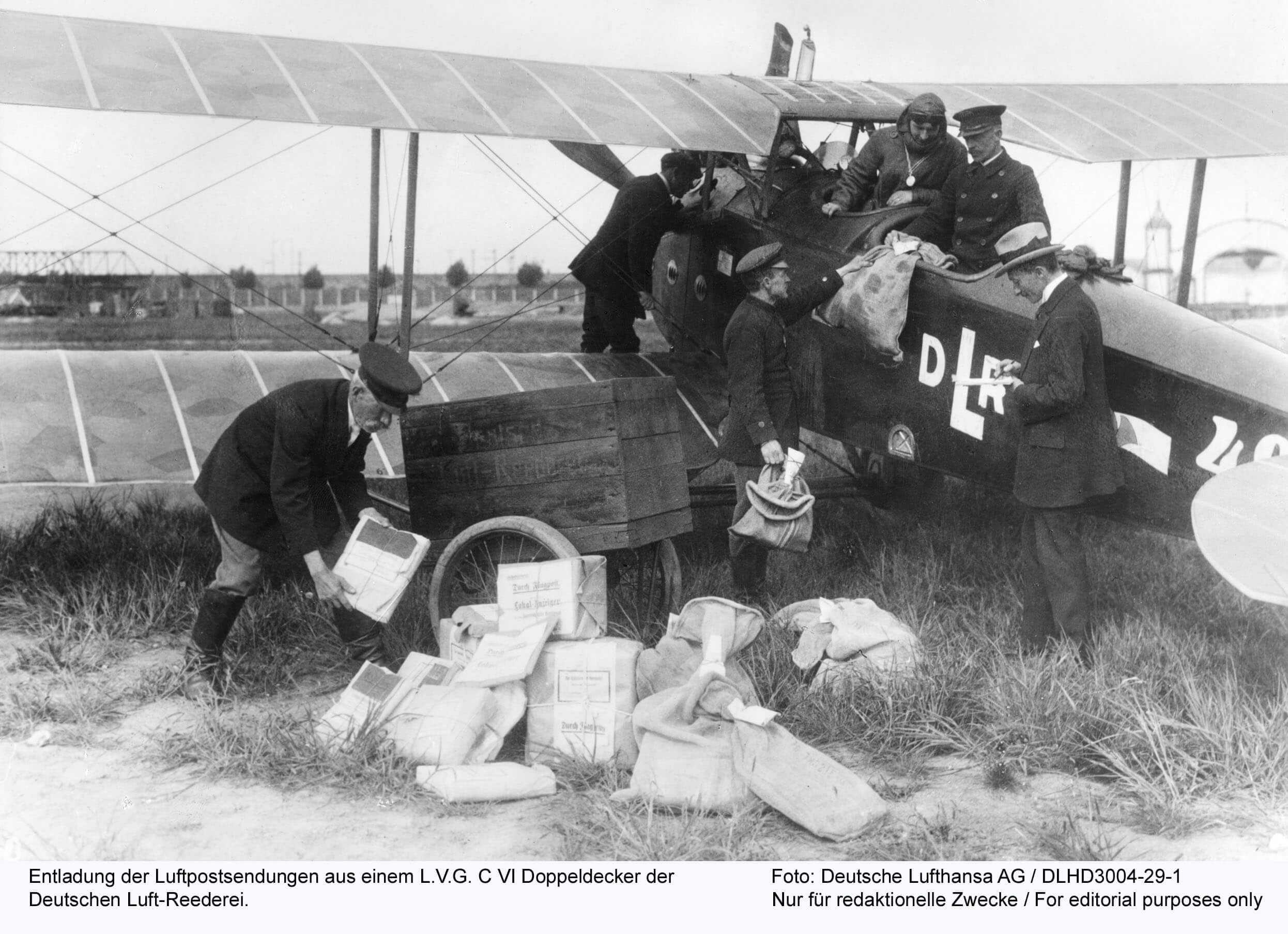German Air Shipping Company is often accounted as the first civil air company in the world. Having flown for the first time 100 years ago, the DLR is long gone, but you can still find clues of the airline when boarding modern aircraft.
In 1919, two years after being founded in Berlin, the Deutsche Luft Reederei (German Air Shipping Company, DLR) received permission to operate flights. Taking to the skies for the first time on February 5, 1919, the airline flew from Berlin to Weimar in two hours, carrying 4,000 copies of the newspaper “B.Z. at noon” onboard.
German Air Shipping Company poster (1918) Photo: LH-Bildarchiv / Lufthansa (LHAB) (LHA) 1992 D 50-14-17, source: Picture Archive, FRA CI / C
DLR is generally considered to be the first civil air company in the world. In fact, when it was launched Germany already had an airline operating since 1910. But the elder airline, called DELAG, used lighter than air aircraft – the famous Zeppelin – while DLR used single engine biplanes rebuilt from warplanes, most notably AEG J.II , LVG CV and LVG C.VI.
DLR began as an airmail service company, carrying loads from Berlin to Weimar, Leipzig, Hamburg, Hanover, and operating international routes to the Netherlands, Scandinavia and the Baltic Republics since 1921. In 1919, it also became one of the founding members of the International Air Traffic Association, the predecessor of IATA.
Passenger service picks up
Soon after it began airmail service, the airline picked up its first passengers. On March 1, 1919, it launched passenger service on Berlin – Hamburg and Berlin – Warnemünde routes. Since its fleet consisted of modified military aircraft, the first passengers rode in open cockpits, before some planes could accommodate two-three passengers in seats in enclosed cabins.
Photo: Deutsche Lufthansa AG / 1919 DLHD3004-29-1, source: Picture Archive, FRA CI / C
“The flight Berlin – Weimar cost at that time the unimaginable sum of 450 marks for the easy route. The return flight cost 700 marks. For that you got neither service nor entertainment program, only borrowed warm clothes – a fur suit, scarf, fur boots and fur gloves – to protect from the cold. Safety helmets and goggles were used for safety. This was necessary too, because both the pilot and passenger sat outdoors,” the early passenger experience is described by Lufthansa (LHAB) (LHA) .
In the early 20s, air operators were emerging both in Europe and Germany in full force. For instance, by 1923, a total of 37 small air operators were counted in the country. The economic need called for consolidation, thus in 1923 DLR was merged with another air company, which in turn was merged again to form Deutsche Lufthansa (LHAB) (LHA) in 1926. However, signs of DLR remain visible today in Lufthansa’s (LHAB) (LHA) logo: the stylized crane was the airmail company’s logo.



